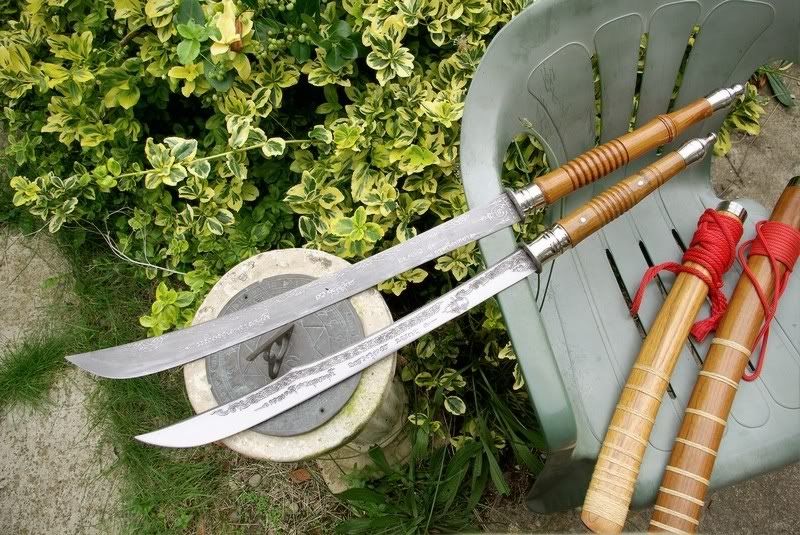i use a strong magnet on my dhas & darbs, if you slide it along the grip you can feel where it pulls on the tang. another way is to suspend the magnet on a string and move the grip across in front of it from the pommel, it'll start deflecting slightly when you reach the end of the tang.
not all have short stub tangs.

two from aranyik
the top one here has a more traditional stub tang about 4in. long, with a steel rod welded to the end that is threaded to hold the heavy metal pommel. blade is differentially hardened, no habaki. heavy steel bolster to absorb the shock of a cut without breaking the handle.
bottom one has a broad tang that extends most of the grip and is pinned in two places with1/4 in. steel pins, again the end has a small rod welded to it to hold the steel pommel. again no habaki and a very thick steel bolster. this one is built to take it. again, a differentially hardened steel blade, but this one was professionally polished.
traditional dha/darb with 3-4in blind stub tangs worked on the battlefield for centuries, i'd not be afraid of using one like that, as long as the resin was in good shape...
i've also seen them where the tang is actually a rod welded to the ricasso of the blade and ground down. avoid them like the plague. they can break under light handling and the flying blade knows no mercy.
p.s. - nice picture of the wielder. the dha/darb is usually a one handed weapon, the long grip is used as a balance, and is normally held just behind the bolster. draw cuts are more normal as opposed to heavy chopping. they are designed for unarmoured or lightly armoured opponents in lightweight clothing. cutting down a tree is also not recommended.